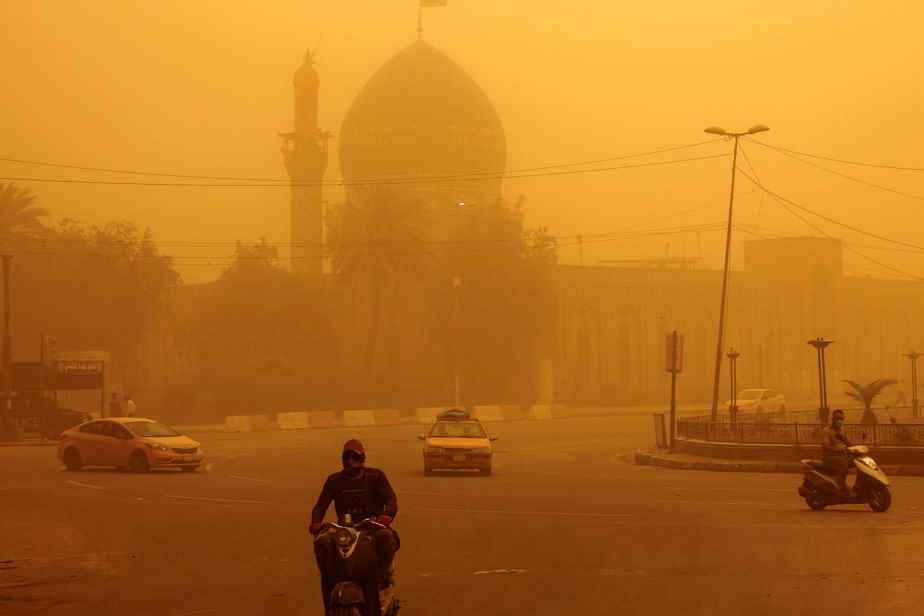(Baghdad) Airports and public administrations in Iraq had to suspend their activities on Monday due to yet another dust storm, which triggered respiratory problems in more than a thousand people before hitting Kuwait and Arabia neighboring Saudi Arabia.
Posted at 4:07 p.m.
In Kuwait, the international airport suspended flights for three hours. And for the second time in less than a week, the thick cloud of dust covered the Saudi capital Riyadh and its iconic monuments, such as the Kingdom Center tower. Saudi Civil Defense warned that the storm would persist until nightfall.
Since mid-April, Iraq, one of the five countries in the world most vulnerable to the effects of climate change according to the UN, has experienced no less than nine dust and sandstorms.
Monday in Baghdad, a cloud of grayish dust floated above the almost deserted streets and freed from the usual traffic jams. South of the capital, near Najaf, shepherds and their flocks found themselves enveloped in a now familiar orange halo.

Photo ASAAD NIAZI, Agence France-Presse
Since mid-April, Iraq, one of the five countries in the world most vulnerable to the effects of climate change according to the UN, has experienced no less than nine dust and sandstorms.
More than a thousand people across Iraq have been treated in hospitals for respiratory ailments, health ministry spokesman Seif al-Badr told AFP.
The storm is expected to gradually dissipate, according to weather services.
Due to “poor weather conditions and the arrival of violent dust storms”, Prime Minister Moustafa al-Kazimi had ordered the closure of “public institutions” with the exception in particular of health departments and security agencies.
“272 days of dust”
Due to visibility not exceeding 400 meters, Baghdad airport suspended air traffic for a few hours during the day.
Erbil International Airport, in autonomous Iraqi Kurdistan (north), announced in the evening a new closure “due to thick dust” which was back, according to the state news agency INA. Thefts had also ceased there for a few hours earlier in the day.
Time and time again, airports have been forced to briefly suspend flights due to storms in recent weeks.
The last two dust storms to hit Iraq have killed one person and driven nearly 10,000 people to hospitals for treatment of respiratory ailments.
These are mainly the elderly, or individuals with asthma, respiratory failure or heart disease, who are considered the categories most at risk, according to health authorities.
“These dust storms usually come in the summer, but not at the same rate as recently,” admitted Seif al-Hamza, a doctor at a hospital in Baghdad. “Cases of suffocation have increased significantly compared to previous seasons. »
Over the next two decades, Iraq is expected to experience “272 days of dust” per year and by 2050, the 300-day threshold will be reached, according to an Environment Ministry official.
Among the measures recommended to combat this phenomenon, the authorities rightly cite the creation of green belts around cities “which act as windbreaks”, at a time when “desertification affects 39%” of the total area of the country. , according to President Barham Saleh.
